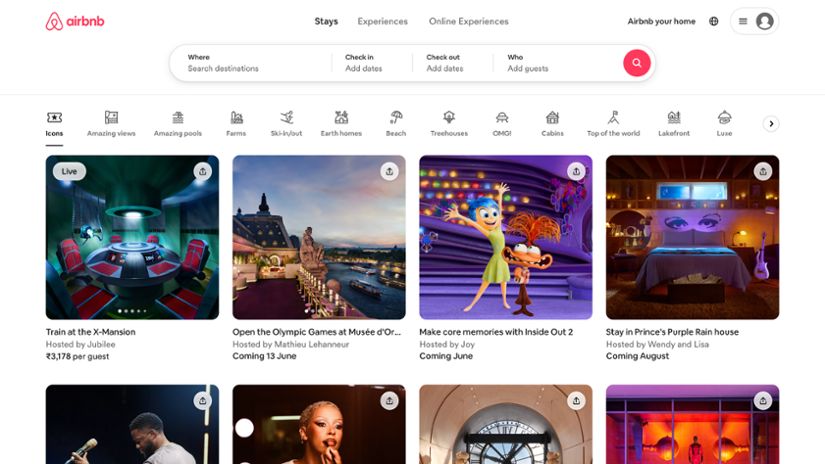How to Build an MVP: A Step-by-Step Guide

Did you know that 42% of startups fail because there's no market need for their product? Building a Minimum Viable Product (MVP) can help you avoid this common pitfall. By focusing on essential features and validating your idea early, you can save time, money, and resources. What if you could streamline this process even further?
In this guide, we’ll cover:
Conducting thorough market research
Defining core features and avoiding feature creep
Using iterative development and gathering feedback
Planning a strategic launch
Learning from successful MVP examples
Transitioning smoothly from MVP to full product
P.S., Looking for the right tools to accelerate your MVP development? API League offers a comprehensive directory of APIs to simplify your journey. Start exploring now and kickstart your MVP with ease.
Intro to the MVP Concept
Building a Minimum Viable Product (MVP) is the cornerstone of validating your startup product idea, without pouring in all your resources. An MVP is the simplest version of your product that includes only the core features necessary to solve a specific problem and provide value to early adopters. This approach not only saves time and money but also offers critical user feedback to guide further development.
What is an MVP?
An MVP, or Minimum Viable Product, is more than just a stripped-down version of your product. It's a strategic tool designed to test your business hypothesis with minimal viable product and the least amount of effort. By focusing on core functionalities, an MVP allows you to enter the market quickly, gather valuable insights, and make data-driven decisions for future product iterations.
Think of an MVP as a sneak peek into the product market fit of what your product could be. It’s not about launching with fewer features but about launching with the right basic features first. These are the essentials that solve the primary problem your target users face.
Core Problem Focus: Your MVP should directly address the main issue your product aims to solve.
Early User Engagement: Engage with early adopters who can provide invaluable feedback.
Iterative Development: Use the feedback to make iterative improvements.
Benefits of Building an MVP
Launching an MVP has several advantages that can set the foundation for a successful product:
Cost-Effectiveness:
Resource Allocation: By focusing only on essential features, you avoid wasting resources on unnecessary functionalities. This efficient allocation helps you stay within budget and reduces financial risk.
For Example: A startup launching a new social media app might focus initially on basic profile creation and messaging features rather than building complex algorithms for content recommendation.
Faster Time to Market:
Speed and Agility: According to a study by CB Insights, 29% of startups fail due to running out of cash. Faster time to market can help you avoid this pitfall by starting to generate revenue earlier. With a streamlined set of features, you can launch your product more quickly. This agility allows you to start gaining traction and user feedback sooner.
Risk Mitigation:
Testing Assumptions: An MVP allows you to test your core business assumptions with minimal risk. You can validate your market demand, user preferences, and pricing models without committing to a full-scale launch.
Pro Tip: Use tools like API League to find and integrate APIs quickly, enhancing your MVP's capabilities without extensive development time.
User-Centric Development:
Real Feedback: Collect real user feedback to understand what works and what doesn't. This user-centric approach ensures that your final product is tailored to meet the actual needs of your target audience.
Dropbox started with a simple MVP—a video demo explaining the concept. This approach validated user interest before investing in full development.
Data-Driven Decisions:
Informed Iterations: Use the data collected from your MVP’s performance to make informed decisions about future development. This approach reduces guesswork and increases the chances of product success.
By focusing marketing efforts on building an MVP, you not only streamline your development process but also create a robust foundation for scaling your product based on real market needs and user preferences.
Common Challenges and Solutions

Developing an MVP is a strategic yet challenging process. Here are some common challenges you might face and practical solutions to overcome them:
Challenge 1: Defining the Core Features
Problem: It can be difficult to decide which features are essential for your MVP and which can be left for later versions.
Solution:
Prioritization Techniques: Use the MoSCoW method (Must Have, Should Have, Could Have, Won't Have) to categorize features based on their importance.
User Stories: Develop user stories to understand how each feature will benefit your users.
Feedback Loops: Engage with potential users early through surveys and interviews to gather insights on what they value most.
Challenge 2: Balancing Speed and Quality
Problem: Rushing to launch can compromise the quality of your MVP while spending too much time can delay market entry.
Solution:
Iterative Development: Adopt an iterative approach. Release a basic version quickly, then refine based on user feedback.
Agile Methodology: Use agile development practices to maintain a balance between speed and quality.
Testing: Conduct thorough usability and performance testing to ensure your MVP meets basic quality standards.
Challenge 3: Gathering and Implementing Feedback
Problem: Collecting meaningful feedback and deciding how to act on it can be overwhelming.
Solution:
Structured Feedback Collection: Use tools like surveys, user testing sessions, and feedback platforms (e.g., UserTesting, SurveyMonkey).
Analyze Feedback: Look for common themes and prioritize issues that impact user experience the most.
Iterative Improvements: Implement changes in small, manageable iterations, focusing on the most critical feedback first.
Challenge 4: Ensuring Scalability
Problem: An MVP might not be designed to handle large numbers of users, leading to scalability issues.
Solution:
Cloud Services: Utilize scalable cloud services (e.g., AWS, Google Cloud) to handle increased traffic.
Optimize Code: Regularly refactor your code to improve efficiency and scalability.
Load Testing: Conduct load testing to ensure your application can handle high traffic volumes.
Challenge 5: Maintaining User Engagement
Problem: Keeping users engaged with your MVP can be challenging, especially if it lacks certain features.
Solution:
Regular Updates: Keep users informed about new features and improvements.
User Communication: Foster a community through social media, forums, and email newsletters to keep users engaged.
Feedback Integration: Show users that their feedback is valued by implementing their suggestions.
By addressing these common challenges and questions, you can navigate the MVP development process more effectively and set the stage for a successful product launch.
Planning and Research for an MVP
Before diving into the development stage of the product development process, thorough planning and research are crucial. This stage lays the foundation for a successful MVP, ensuring you’re creating something that truly resonates with your target audience and stands out in the market.
1. Market Research Techniques

Understanding your target market is the first step. You need to know who your next potential customers and users are, what they need, and how your MVP can meet those needs. Here’s how to get started:
Competitor Analysis:
Identify Gaps: Look at your competitors' offerings and identify areas where they fall short. These gaps are opportunities for your MVP to provide unique value.
Strengths and Weaknesses: Analyze both the strengths and weaknesses of competing products. Understanding these will help you refine your MVP’s core features.
If you’re building a new project management tool, examine existing solutions to see what users like and dislike. Perhaps they appreciate the task management features but find the reporting tools lacking.
Customer Interviews:
Direct Feedback: Engage with potential users through interviews. Ask open-ended questions to uncover their pain points, needs, and preferences.
User Stories: Use these interviews to create detailed user stories, which can guide your feature prioritization.
Pro Tip: Use API League to integrate feedback collection tools that streamline your interview process, ensuring you capture accurate and actionable insights.
Surveys and Polls:
Quantitative Data: Surveys and polls help gather quantitative data to support your qualitative insights. They provide a broader perspective on user needs and preferences.
Actionable Insights: Design your surveys to ask specific questions about user behaviors and pain points. This data will help you validate assumptions and prioritize features.
2. Defining Core Features and Prioritization

Not all features are created equal. You need to identify and prioritize all the features, that address the main problem your product aims to solve. Here’s a classic example of how to streamline this process:
Core Feature Identification:
Problem-Solution Fit: Focus on features that solve the core problem your users face. These are the non-negotiable elements of your MVP.
User Value: Ensure each feature delivers clear value to your users. Avoid the temptation to add bells and whistles that don’t enhance the user experience.
If you’re developing a fitness app, core features might include workout tracking and progress visualization. Advanced analytics or social sharing can wait for later versions.
Prioritization Techniques:
MoSCoW Method: Use the MoSCoW method (Must Have, Should Have, Could Have, Won't Have) to categorize features based on their importance and impact.
Must-Have: Essential features without which the product cannot function.
Should Have: Important features that are not critical but add significant value.
Could Have: Nice-to-have features that can enhance the user experience but are not crucial.
Won't Have: Features that can be excluded from the MVP but considered for future updates.
Pro Tip: Regularly review and adjust your feature priorities based on user feedback and market changes. Tools like Trello or Jira can help manage this process effectively.
Feasibility Assessment:
Technical Feasibility: Assess the technical feasibility of each feature. Ensure your development team has the capability to implement these features within the MVP timeline.
Resource Allocation: Consider the resources required for each feature. This includes time, budget, and personnel. Focus on features that offer the highest return on investment.
If a feature requires complex AI integration, assess whether it’s feasible to include it in the MVP or if a simpler version can be implemented first.
By conducting thorough market research on initial users and carefully defining and prioritizing your core features, you set the stage for a successful MVP. This approach not only ensures that you’re building something that users need but also helps you avoid common pitfalls that can derail your project.
3. Development and Prototyping
Once you have a clear plan, it's time to bring your MVP to life. This phase involves several critical steps that transform your conceptual framework into a tangible product. Let’s dive into the essential components of development and prototyping:
Building Prototypes
Prototyping is the first step in turning your ideas into something visual and interactive. Here’s how to approach it:
Create Mockups: Start with simple sketches or digital mockups to outline your product's design and user interface. Tools like Figma, Sketch, or Adobe XD are excellent for this purpose.
For Example: For a new fitness app, create mockups showing the main dashboard, workout tracking screen, and progress charts.
Wireframes: Develop wireframes to detail the layout and functionality of your MVP. Wireframes help you visualize the user journey and identify potential design flaws early.
Pro Tip: Keep your wireframes simple and focused on core functionalities. Avoid getting bogged down in aesthetics at this stage.
Interactive Prototypes: Build interactive prototypes to simulate how users will interact with your product. These prototypes allow you to test user flows and gather initial feedback.
Tool Recommendation: Use tools like InVision or Marvel to create clickable prototypes that mimic real user interactions.
Testing Prototypes
Once you have your prototypes, it’s crucial to test them with real users to gather feedback and refine your ideas:
User Testing: Conduct usability testing sessions with a small group of target users. Observe how they interact with your prototype and note any difficulties or confusion.
For Example: Test your fitness app prototype with a group of fitness enthusiasts to see if they can easily navigate through the workout tracking features.
Feedback Collection: Use structured methods like surveys or interviews to gather detailed feedback. Ask specific questions about their experience, what they liked, and what could be improved.
Pro Tip: Record user testing sessions (with permission) to capture genuine user interactions and insights.
Iterative Refinement: Based on the feedback, refine your prototypes. Focus on addressing usability issues and improving the user experience.
User Feedback and Iteration
After developing your MVP, it’s time to launch your product solve show it to a select group of users. This phase is crucial for gathering actionable feedback and iterating on your product.
Launch to Beta Users: Release your MVP to a small, targeted group of beta users. These early adopters can provide valuable insights into your product's strengths and weaknesses.
For Example: Launch your fitness app to a community of fitness enthusiasts who can provide detailed feedback on its functionality.
Gathering Feedback: Use various channels to collect feedback, including in-app surveys, user interviews, and analytics tools. Focus on understanding user behavior and identifying pain points.
Tool Recommendation: Platforms like Mixpanel or Google Analytics can help track user interactions and provide data-driven insights.
Iterative Improvements: Continuously iterate on your MVP based on the feedback. Implement changes to address user pain points and enhance key features.
Pro Tip: Use a feedback loop framework like the Build-Measure-Learn cycle from Lean Startup methodology to guide your iterations.
The Role of Feedback
Continuous feedback loops are vital for the success of any business model your MVP. They help you understand what works, what doesn't, and how to make your product better.
Identify Pain Points: Feedback helps you pinpoint where users are struggling. Addressing these issues can significantly improve the user experience.
Enhance Features: Use feedback to improve existing functionalities. This iterative enhancement ensures your product remains aligned with user needs and expectations.
Pro Tip: Regularly update your users on improvements and changes. This keeps them engaged and shows that you value their input.
Plan Future Updates: Strategic planning of new features based on user feedback can add substantial value to your MVP. Focus on features that users demand the most and that will enhance the overall product experience.
By following these steps in development and prototyping, you ensure that your MVP is not only functional but also user-friendly and aligned with market needs. This approach sets a solid foundation for future rapid development and scalability.
Real-World Example of an MVP: Airbnb

Airbnb's journey began with a simple MVP. The founders needed extra cash and decided to rent out their own apartment. They created a basic website where users could list their spaces and make bookings. This MVP had the core functionalities necessary to test their business idea: listing spaces and booking them.
By starting small, Airbnb was able to validate the demand for short-term rentals. The initial user feedback highlighted what worked and what didn’t. This iterative process of gathering feedback validated learning, and making improvements was crucial.
From these humble beginnings, Airbnb evolved, iterating on its MVP based on user feedback until it became the billion-dollar company they are today.
4. Testing and Launch

Before you launch your MVP to the wider market, it’s crucial to ensure it meets basic user expectations. Rigorous testing will help you identify and fix any critical issues, ensuring a smoother launch. Here’s how to approach this phase:
Types of Testing
Usability Testing:
Objective: Ensure your product is user-friendly and intuitive.
Method: Conduct tests with real users to observe their interactions with your MVP. Look for areas where they struggle or seem confused.
Tool Recommendation: Use tools like UserTesting or Lookback to gather detailed usability feedback.
Performance Testing:
Objective: Check for speed and responsiveness under different conditions.
Method: Simulate various scenarios to test how your MVP performs under load. This includes peak usage times and different network conditions.
Pro Tip: Tools like JMeter or LoadRunner can help you perform thorough performance testing.
Security Testing:
Objective: Protect your user data by identifying potential vulnerabilities.
Method: Conduct penetration testing and vulnerability assessments to ensure your MVP is secure.
For Example: Hiring a security expert or using security tools like OWASP ZAP can help identify and fix security issues before launch.
Beta Testing:
Objective: Get real-world feedback and uncover issues that might not have surfaced during internal testing.
Method: Release your MVP to a small group of beta users. These early adopters can provide valuable insights into the user experience and help identify any critical bugs.
Pro Tip: Platforms like TestFlight (for iOS apps) or Google Play Beta Testing (for Android apps) can facilitate the beta testing process.
Strategic Launch
A well-planned launch can set the stage for your MVP’s success. Here’s how to make it impactful:
Target Early Adopters:
Why: Early adopters are more forgiving of minor issues and can provide valuable feedback.
How: Identify communities and platforms where your target users are active. Engage with them and offer early access to your MVP.
For Example: If your product is a fitness app, target fitness enthusiasts on forums, social media groups, and through influencers.
Leverage Marketing Channels:
Social Media: Create buzz by sharing your MVP’s story, benefits, and unique features on platforms like Twitter, Facebook, LinkedIn, and Instagram.
Blogs and Influencers: Collaborate with bloggers and influencers in your niche to spread the word about your MVP.
Email Marketing: Build an email list and keep your audience updated with newsletters and exclusive early access invitations.
Monitor Performance:
Track Key Metrics: Monitor user engagement, retention rates, and feedback to understand how your MVP is performing.
Adjust Accordingly: Use the data collected to make informed decisions about future iterations and improvements.
5. Post-Launch: Analyzing and Iterating

The launch of your product to your initial customers and solving your MVP is just the beginning. Post-launch, your focus should shift to analyzing performance and iterating based on user feedback. This stage is crucial for refining your product and ensuring it meets market demands.
Key Metrics to Track
To make informed decisions, you need to track several key metrics:
User Engagement:
What to Measure: Track how actively users interact with your product. Metrics such as daily active users (DAU) and session length can provide insights.
Why it Matters: High engagement often correlates with user satisfaction and indicates that your MVP is providing value.
For Example: If users spend a lot of time on your fitness app’s workout tracking feature, it indicates strong engagement with this functionality.
Retention Rates:
What to Measure: Measure how many users return to your product after their first use. Cohort analysis can help track retention over time.
Why it Matters: Retention is a strong indicator of your MVP's stickiness and overall value to users. According to Appcues, improving user retention by 5% can increase profits by 25% to 95%.
Feedback:
What to Measure: Collect qualitative feedback through surveys, user interviews, and reviews. Pay attention to common themes in user feedback.
Why it Matters: Direct user feedback helps you understand pain points and areas for improvement.
Use tools like Intercom or Zendesk to streamline feedback collection and management.
Use this data to make informed decisions about what to improve next. Regularly reviewing these metrics helps you stay aligned with user needs and market trends.
Scaling Your MVP
Once your MVP has proven its own core functionality and value proposition, it’s time to think about scaling. This involves enhancing features, expanding your market reach, and ensuring your infrastructure can handle increased usage.
Improving Features:
User-Driven Updates: Based on user feedback and market demand, prioritize new features that will add significant value. Focus on enhancements that solve common pain points or add highly requested functionalities.
Alignment with Vision: Ensure these updates align with your overall product vision and long-term goals.
Expanding Market Reach:
New User Segments: Identify new user segments and geographical areas where your product could be beneficial. Conduct market research to understand these new audiences.
Tailored Marketing Strategies: Tailor your marketing strategies to effectively reach these new segments. Use targeted ads, localized content, and partnerships to expand your reach.
Utilize analytics tools like Google Analytics to track the effectiveness of your marketing campaigns and adjust strategies accordingly.
Infrastructure Scaling:
Optimizing Code: Ensure your codebase is efficient and scalable. Refactor any bottlenecks that could hinder performance.
Increasing Server Capacity: Upgrade your server capacity to handle increased traffic. Consider using load balancers to distribute traffic evenly.
Leveraging Cloud Services: Use cloud services like AWS or Google Cloud for better scalability and flexibility. These platforms offer tools to manage and scale your infrastructure effortlessly.
For Example: If your fitness app experiences a surge in users, leveraging AWS’s auto-scaling feature can help maintain performance without manual intervention.
Continuous Improvement
Scaling is not a one-time task. Continuous monitoring and iteration are key to long-term success. Regularly revisit your metrics, gather new feedback, and adjust your strategies as needed.
Ongoing User Engagement: Keep users engaged with regular updates, new features, and improved functionalities.
Community Building: Foster a community around your product to build loyalty and encourage word-of-mouth referrals.
Staying Ahead: Stay ahead of competitors by continuously innovating and adding value. Monitor industry trends and be ready to adapt quickly.
By focusing on analyzing performance, gathering user feedback, and iterating on your product, you can ensure your MVP evolves into a full-fledged product that meets user needs and scales effectively.
Key Takeaways
Validate with MVP: An MVP helps validate your business idea with minimal resources, saving time and money while collecting valuable user feedback.
Thorough Market Research: Understand your target audience and market gaps to guide MVP development.
Focus on Core Features: Prioritize features that solve the primary problem for your users and deliver maximum value.
Prototyping and Testing: Develop prototypes and conduct usability, performance, and security testing. Collect feedback from beta users for iterative improvements.
Post-Launch Analysis: Track key metrics such as user engagement, retention, and feedback to make informed decisions for future development and scaling.
Effective Scaling: Improve features, expand your market reach, and scale your infrastructure. Continuously iterate based on user feedback for long-term success.
Use API League for MVP Development
Launching an MVP is a strategic process that involves careful planning, rigorous testing, and a well-executed launch strategy.
By focusing on usability, performance, and security, and by leveraging marketing channels to target early adopters, you set the stage for a successful MVP launch. Continuous monitoring and iteration based on real-world customer feedback will ensure your product evolves in line with user needs.
Key Takeaways:
Validate with MVP: An MVP helps validate your business idea with minimal resources, saving time and money while collecting valuable user feedback.
Thorough Market Research: Understand your target audience and market gaps to guide MVP development.
Focus on Core Features: Prioritize features that solve the primary problem for your users and deliver maximum value.
Prototyping and Testing: Develop prototypes and conduct usability, performance, and security testing. Collect feedback from beta users for iterative improvements.
Post-Launch Analysis: Track key metrics such as user engagement, retention, and feedback to make informed decisions for future development and scaling.
Effective Scaling: Improve features, expand your market reach, and scale your infrastructure. Continuously iterate based on user feedback for long-term success.
Use API League for MVP Development: API League offers a comprehensive directory of APIs to streamline your MVP development and enhance its features. Explore their offerings to kickstart your MVP journey with the right tools.
Are you looking for tools to streamline your MVP development and testing? API League offers a comprehensive directory of APIs and existing tools that can accelerate your development process and improve your MVP’s features. Explore their offerings to kickstart your MVP journey with the right tools at your disposal.